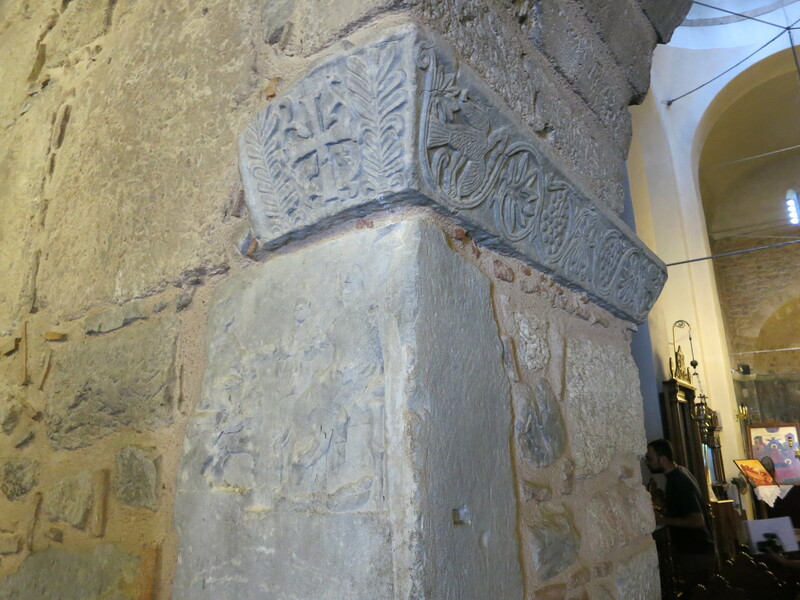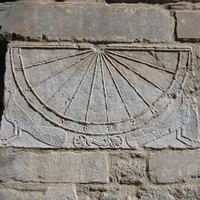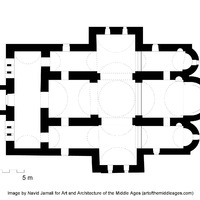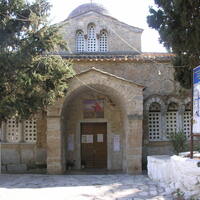Koimesis church at Skripou
Type:
Churches
Date:
873/4
Location or Findspot (Modern-Day Country):
Greece
Description:
Most middle Byzantine churches in Greece were built mostly of brick combined with some stone, but a large (approx. 29 × 31 m) domed church dedicated to the Koimesis of the Theotokos at Skripou is almost entirely made of stone. The material was reused from the ancient city on that site, Orchomenos, the home of the Three Graces of Greek myth. The church exterior is encircled by a brick stringcourse; above this level the walls were plastered, making the ancient blocks and columns invisible; below it, the spolia were easily visible. The reused materials were supplemented by new inscriptions on all four sides of the church. These announce the patronage of a Byzantine dignitary named Leo, who was buried in the church he built in 873/4. On the west facade, incised on white marble, an inscription celebrates the donor in classical hexameters and Homeric phrases. It ends, "Among the bountiful creatures through the endless cycles of time, O highly praised Leo the great protospatharios, rejoicing in your property and in your most excellent offspring, as you command the area of the legendary Orchomenos." Leo, proud of his classical learning and antiquarian tastes, has made a formerly pagan site Christian.
Leo's other three inscriptions, with letters in relief, cluster near or on the east end of the church. Because they are not metrical and avoid high-level language, they would have been much easier to read. Curving along the central apse is Leo's personal prayer to Mary and Jesus, for whom he (and his unnamed wife and children) built the church "out of yearning and great faith". This text is complemented with panels featuring animals and stylized plant forms in low relief; friezes on the interior were carved by the same artists. On the south facade is a sundial flanked by peacocks: the sundial evokes the "cycles of time" in the dedicatory inscription, and peacocks were familiar symbols of immortality. On certain feast days and anniversaries, visitors probably circumambulated the church, read the texts or heard them read aloud, and remembered Leo in their prayers.
Leo's other three inscriptions, with letters in relief, cluster near or on the east end of the church. Because they are not metrical and avoid high-level language, they would have been much easier to read. Curving along the central apse is Leo's personal prayer to Mary and Jesus, for whom he (and his unnamed wife and children) built the church "out of yearning and great faith". This text is complemented with panels featuring animals and stylized plant forms in low relief; friezes on the interior were carved by the same artists. On the south facade is a sundial flanked by peacocks: the sundial evokes the "cycles of time" in the dedicatory inscription, and peacocks were familiar symbols of immortality. On certain feast days and anniversaries, visitors probably circumambulated the church, read the texts or heard them read aloud, and remembered Leo in their prayers.
Relevant Textbook Chapter(s):
5
Image Credits:
Linda Safran, Navid Jamali, Brad Hostetler









